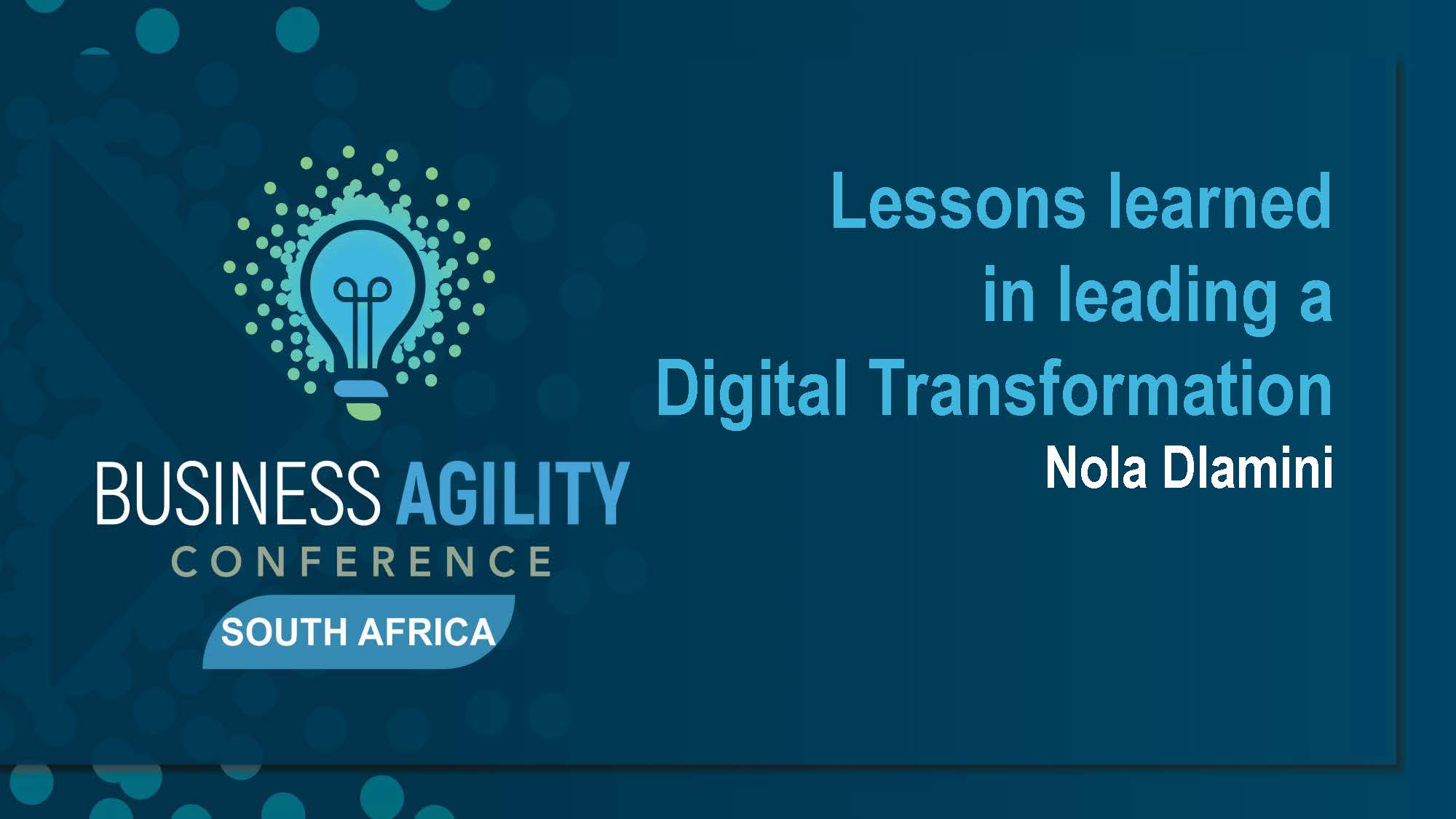Good afternoon, or good morning, everyone. Let me just check the time—yes, it's good afternoon. I’m super excited because we are at a pivotal moment where the world is going to change significantly. Our children's children won’t even wonder what a sling telephone is. They won’t have a clue about the technology we are using today, and we, the people in this room, are part of that transformation.
For context, I used to work for Vodacom. I am no longer with Vodacom, and none of the views expressed in this presentation are necessarily the views of Vodacom. Now that we have that out of the way, let’s get going.
You might wonder why ramp models are on my cover slide. Do I aspire to be the lady in the front leading digital transformation? No. Digital transformation is actually very similar to fashion—attractive, impractical, and expensive.
Any executive who has been asked to define digital transformation has likely come up with what I call a mirage—an optical illusion based on hot air. We cannot drive transformation on hot air, which is exactly why I decided to leave my job. While I was happy and impactful in my role, I felt that digital transformation was being led by illusions rather than practical, solution-oriented leadership. As a continent, we need to be pragmatic about what problem we are solving and where we want to take our people.
So, as you listen to me, I want you to think about this: Some people use digital transformation interchangeably with agile, applying the term loosely as they go along. That has its own implications. If you can answer this for me, it would help me in where I’m going.
Strategic Intent
When embarking on digital transformation, the first thing we must do is define our strategic intent. I don't mean management clichés with words like "culture." If we cannot articulate in plain English why we are doing what we are doing, how do we expect people to change?
Number one: Strategic intent must be clearly articulated by executives and leadership, then rolled out across the company. Number two: It must be followed by measurable business outcomes. If digital transformation is not linked to performance management, it will fail. Metrics drive behavior. If you have ever seen a table of executives stressed about KPIs, you will know that transformation cannot happen without aligning business outcomes to strategy.
No CEO will invest in something that doesn’t add value. Adding value is not an abstract concept—it’s simple. If customers do not see value, they won’t pay. If the company doesn’t make money, the transformation fails. The value contribution of digital transformation must be clear—it must impact customers, internal operations, and efficiency.
Cost Considerations
From the start, cost considerations must be clear. Imagine embarking on a digital transformation only to find that the executive team is not prepared to invest in it. Without clear funding, transformation efforts will stall.
Drafting a Plan
Drafting a digital transformation plan is a schizophrenic exercise. If you have run a project office, you know that planning in a digital transformation is not linear. Some things start, some stop, some accelerate unexpectedly. Execution must be agile. Ownership is critical—if executives nod in agreement but leave the room without clear ownership, the transformation goes nowhere.
Ownership should not rest with a "Chief Digital Transformation Officer." Instead, the entire leadership team must own it. Otherwise, we risk making this person a scapegoat when challenges arise.
Governance and Reporting
Manual reporting cannot sustain digital transformation. The governance structure must be adaptable, and reporting must be automated to support agile execution.
Structure of Digital Transformation
Typically, digital transformation is structured around:
- Customers and offer management
- Operating models
- Technology
- Operations
Customer and offer management determine how we show up in the market. An operating model is not a business model—it defines how we organize ourselves to serve the market better. The challenge with digital transformation is that we do not know exactly how it will unfold, so our operating models must be flexible.
Technology
AI, machine learning, data analytics—technology is evolving exponentially. The challenge is not just adopting technology but learning to apply it effectively.
Operations
Operations encompass supply chain, finance, and enterprise functions. Digital transformation is not just for product and tech teams—it affects the entire organization.
Two Phases of Digital Transformation
Digital transformation must change both how we show up in the market and how we operate internally. We cannot offer digital services while running a manual, paper-driven organization.
Culture
Leadership must identify cultural aspects that will not fit the future and be ruthless in addressing them. Transformation requires collaboration between leadership and teams.
People and Change
Change management is critical. We must listen first, then communicate. We must clarify future roles and skills so that employees can decide their own paths. Automation will inevitably replace some jobs, but our responsibility is to create new opportunities.
Technology as an Enabler
Technology should simplify complexity and improve execution. However, large organizations cannot behave like startups operating from a garage. We must integrate new technology while respecting existing investments.
Upskilling People
We must upskill employees rather than expect them to transition from a manual world to digital transformation overnight.
Key Takeaways
- Know the "why" of digital transformation.
- Have a flexible plan—don’t rely on rigid project management.
- Define business outcomes that add value to customers and the business.
- Draft a dynamic operating model.
- Observe leadership behavior—it determines transformation success.
Thank you.





